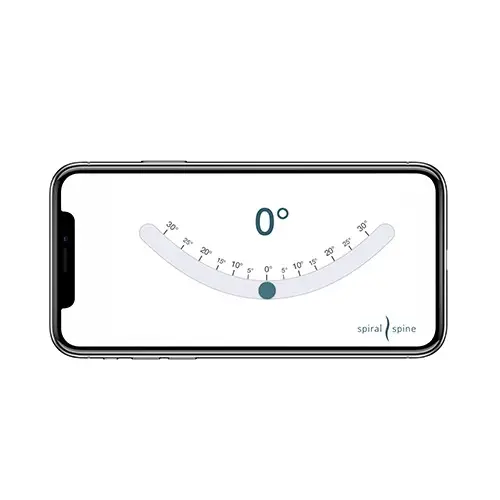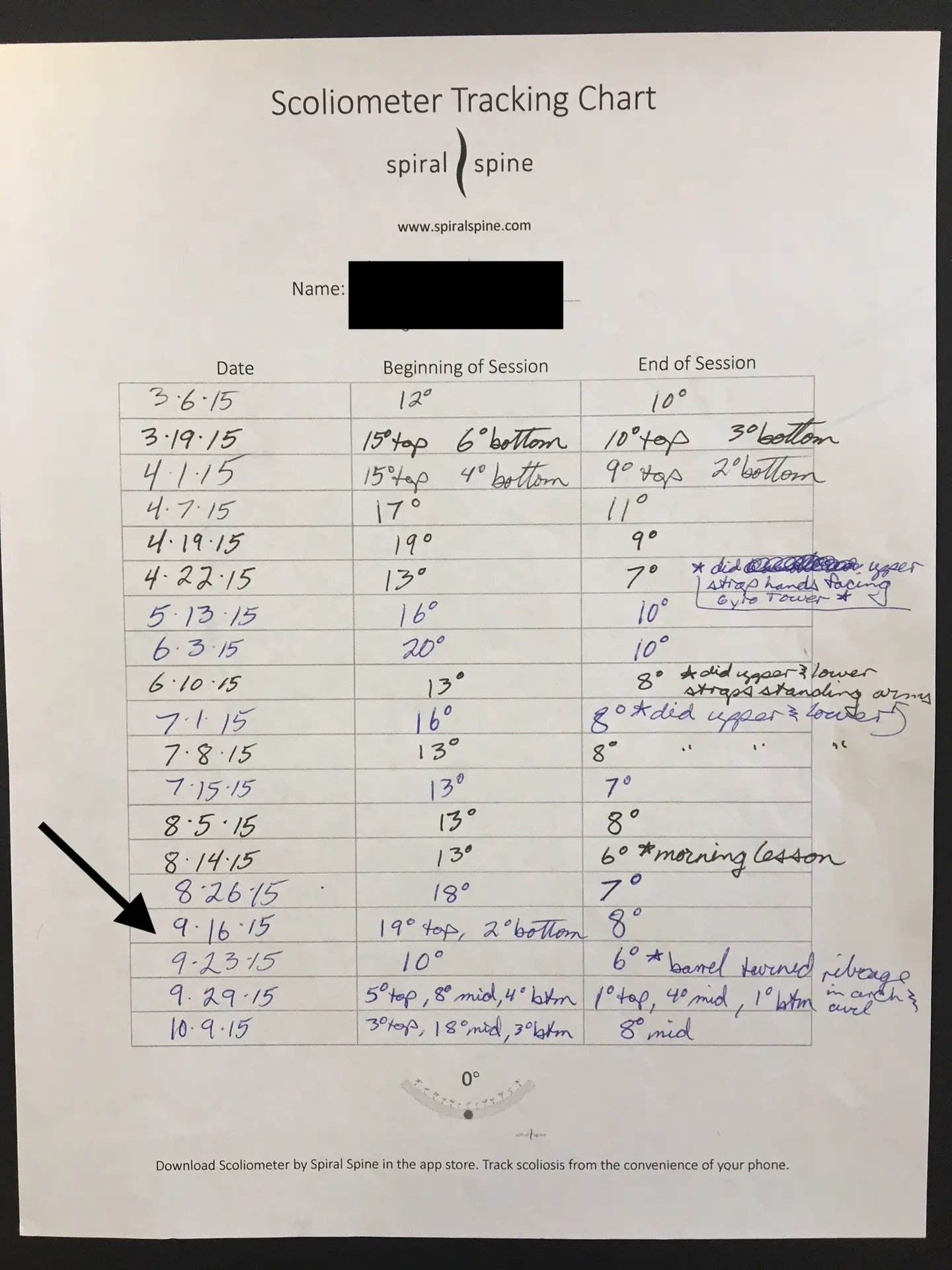
This blog is part of the Analyzing Scoliosis series, which is designed to teach movement practitioners how to work confidently with clients who have scoliosis. To start at the first post in the series, go here. My book, Analyzing Scoliosis*, which covers the topics in this series in more depth (as well as others), is available on Amazon.
So you’ve learned how to use a scoliometer and you’ve got a bunch of readings from you client. Now what? Learning how to use a scoliometer to is easy as I demonstrate with one one of my real-life clients below.
How to Use a Scoliometer to Plan a Lesson
I have a scoli client who has a 75-degree major curve (remember, this is the Cobb Angle measurement which comes from an X-ray). She’s been to many Schroth trainings (physical therapy specializing in scoli) around the country, wears a Cheneau-Gensingen brace (one of the best back braces on the market), and is diligent about taking care of her scoli. On one particular day, she came in complaining of back pain. As always, I measured her degree of rib cage rotation at the beginning of the lesson using my Scoliometer app (iPhone; Android). I quickly noticed that her major curve was rotated to 19 degrees, a higher reading than ever before, which I confirmed by checking her Scoliometer Tracking Chart in her client file. I knew then I needed to spend the lesson opening up and straightening her curves, as well as decreasing her rotation to prevent her scoli from getting even worse.
We spent the next 50 minutes focusing on exercises that stretched and strengthened her back and rib cage. She said she felt better by the end, but I measured her rotation again to be sure. Lo and behold, her rib cage rotation was down to 9 degrees, which was one of the lowest readings we had ever achieved. Success! I didn’t have to guess if her initial back pain was caused by her spine’s extreme condition that day, nor did I have to guess if I’d actually helped her unwind her scoli by the end of the lesson. The scoliometer told me.
Here is a picture of this client’s actual Scoliometer Tracking Chart. You can see the exact lesson I just wrote about.

Oftentimes, people with scoli get discouraged because they can’t figure out what to do to help their scoliosis improve, and they can’t find someone they trust to help them. In turn, they stop doing everything and become inactive. This is not the answer!
You don’t have to have a PhD in order to figure out which movements help (or hurt) your client’s spiral spine. Continuously using a scoliometer will help you easily determine which exercises or lessons are most beneficial (or not) to your client’s spiral spine.
Using Scoliometer Readings to Limit X-Rays
There’s another added benefit to using a scoliometer. Because of their condition, scoliosis patients are subjected to many X-rays throughout their lives. In fact, scoliosis patients who are treated with a back brace can have more than twenty X-rays over the course of three years. Because of this increased exposure to radiation, scoliosis patients are at an increased risk of breast cancer— one study showed that the incidence of breast cancer was twice as high in a group of scoli patients as it was in a control group.
Personally, I haven’t had a single X-ray for my scoliosis in years, and I don’t plan on having one any time soon. I don’t have any intention of getting a back brace or having surgery on my spine, so I have no need to undergo spinal X-rays to simply check on the status of my scoliosis. Instead, I rely on years of scoliometer data to tell me the status of my spiral spine— no radiation exposure needed.
Using your scoliometer and the data it provides can help your client do the same: keep tabs on their scoli without exposing themselves to the harmful effects that X-rays and radiation can have on their bodies. Share your scoliometer readings with them, and encourage them to keep track of the readings in a journal of their own. This way, they have an alternative to excessive X-rays, and they can make truly informed decisions as to whether they need additional X-rays to manage their scoli.
So how do you use a scoliometer to plan a lesson? Use it regularly and keep a record of a client’s measurements! Have you started using one yet?
Erin Myers is an international presenter on scoliosis and founder of Spiral Spine, a company designed to enrich the lives of people with scoliosis. She’s also created a number of scoliosis resources including the books I Have Scoliosis; Now What? and Analyzing Scoliosis, the scoliometer app (iPhone and Android) and many videos. She owns Spiral Spine Pilates studio in Brentwood, TN, which allows her to actively pursue her passion of helping those with scoliosis through Pilates, which she has been doing for over 15 years.
*This post contains affiliate links, so we may earn a small commission when you make a purchase through links on our site at no additional cost to you.

Leave a Reply